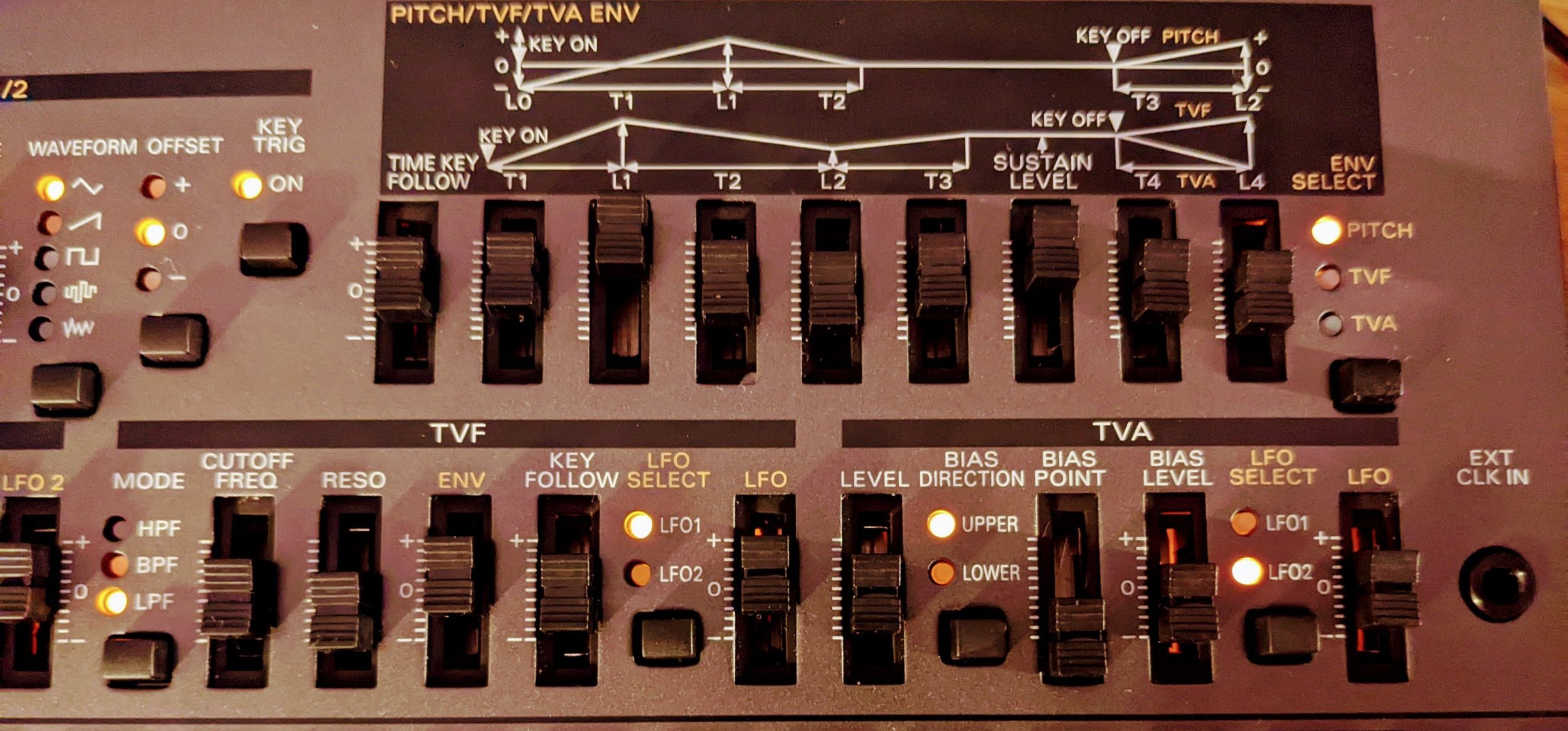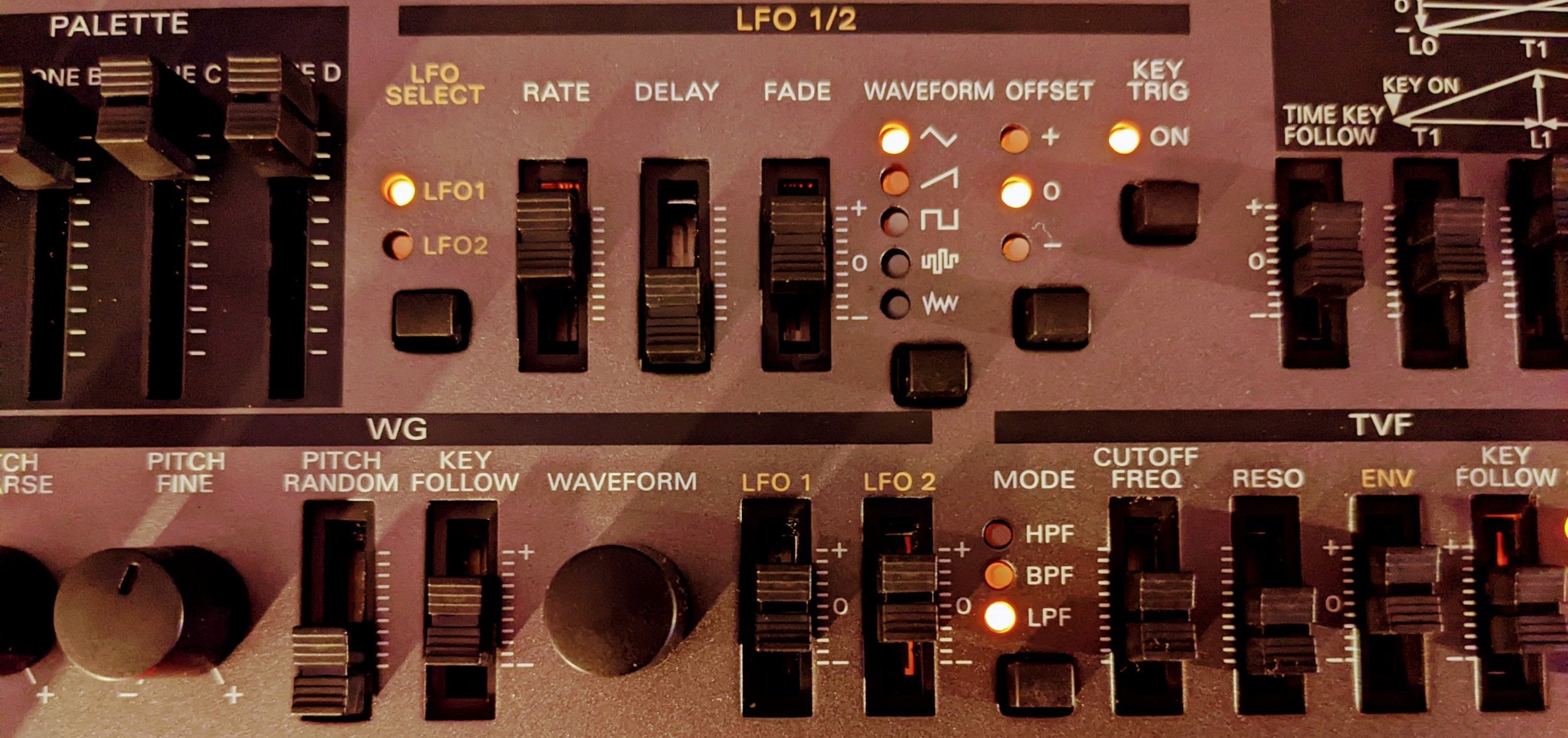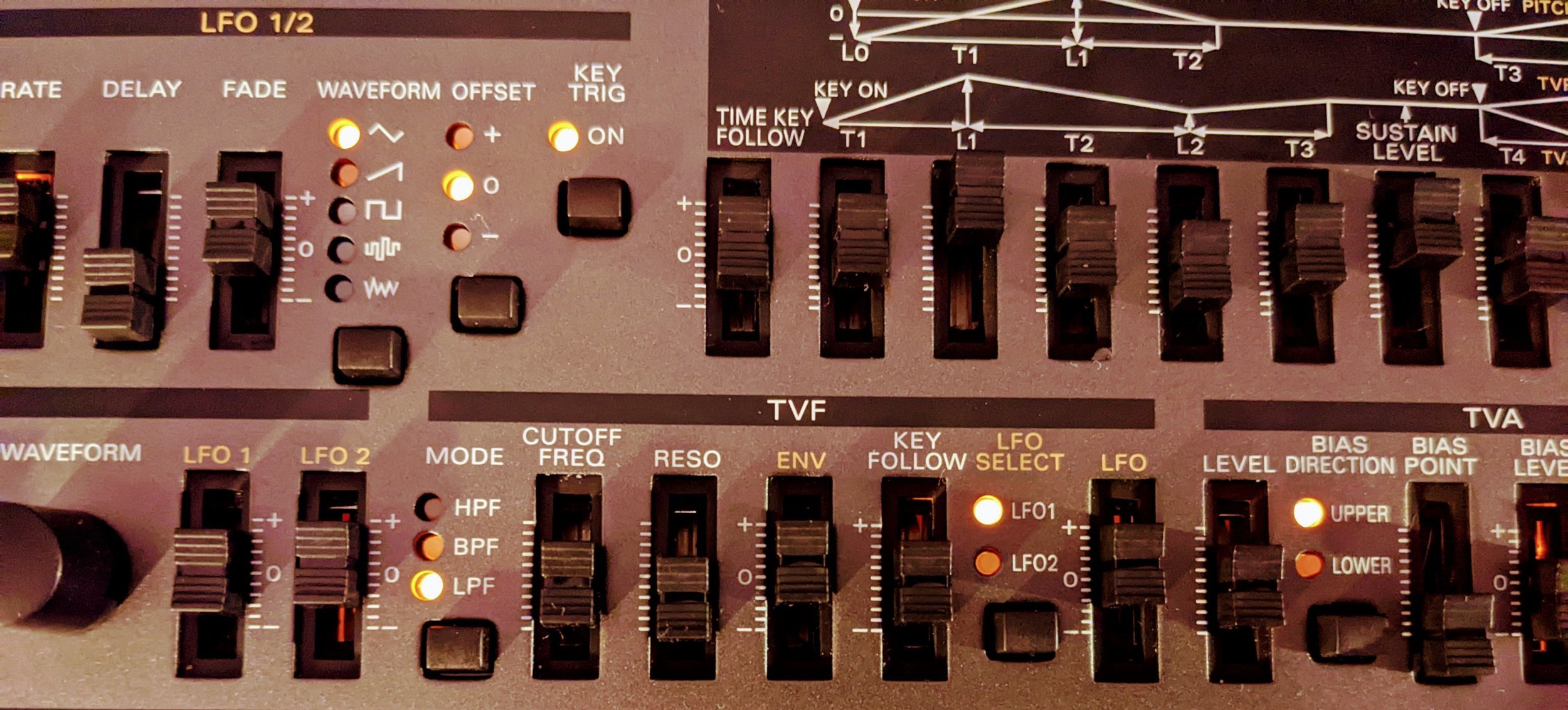Roland JD-08 Review 2022
So, at last Roland has come out with a boutique for the legendary 90’s digital classic the JD-800. As always, early reactions to the synth are mixed, and frequent complaints about its size abound. It also garners a lot of praise. But how is the synth really? Is it a faithful recreation, or merely a pale photocopy? Is it a worthy synth for modern music production? Let’s dive in and take a look.
OSCILLATORS
According to the Roland site, the JD-08 contains all the original waveforms from the JD800. So if you’re looking for all the OG waveforms, you will not be disappointed. Everything is on display here, from 3 different kinds of Sawtooth waves, to multiple widths of Pulse and Square waves, triangle, sine, and numerous digital and sampled waveforms of everything from guitars to pianos, to folk instruments from all over the globe. There’s even a couple human voice type waves in there, which is fun.
The oscillators are all bright, crisp, and clean, and word on the street is that the sound of the JD-08 is a bit brighter than the original, so you can get an even crisper tone from it for modern productions.
You can layer up to 4 waveforms at once using each of the Tone buttons, and because of the architecture of the synth, each Tone can have its own independent Envelopes applied to it, so you can create really cool morphing and evolving textures that few other synths are capable of.
It lacks Pulse Width Modulation though, so the various fixed-width pulse waves and squares are all you get. There’’s no pulse sweeps or subtle modulations to be done to these. Which makes sense, given that the waveforms are technically all samples stored on the synth. But it’s still annoying for those of us accustomed to analog and VA synthesis.
That limitation aside, the sheer number of possible waveform combinations and the ability to independently modulate each one makes this synth a true powerhouse for any genre.
FILTER
The filter here is fairly typical of other Rolands, in that it has a bright resonance, and sounds quite nice. It doesn’t properly self-oscillate like a Moog though, so achieving squelchy round Moogy basses and acid sounds will be a bit challenging (it’s doable, but a lot of it will come from how to set the Filter Envelopes, since the filter has only one slope type).
The Hipass and Bandpass filters are great though, and allow for added tonal exploration that are a joy to work with on all kinds of patches. The bandpass is particularly nice for aggressive FM type squelches and squishes.
AMPLITUDE
This is where things get interesting. All 3 envelopes are accessed using this single set of controls, and you have to button-push to dive into each one - and that’s on a per-Tone basis. So if you’re making a 4-layer patch with different layers of modulation for each Tone, you’ll be menu diving a good 12 times to get it all set up.
That said, the level of granularity for sound sculpting with these extended envelopes is intense. You get extended decay AND sustain parameters, allowing you to create wild evolving textures and pads that shimmer and sweep in ways few other synths can pull off.
The Pitch envelope section of this cuts back on a couple of the usable parameters/ changes their effects a bit, but other than that, these envelopes behave the same across all sets of parameters, giving you individual tonal control for everything.
It does take some getting used to though, and wrangling the Decay and Sustain amounts, levels, and slopes so you can make normal trance and house sounds takes a time to get a feel for. Your patience will be rewarded here.
LFO
Now this is nice. 2 independent LFOs give you a lot of nice options for sound manipulation. Initially they are free-running LFOs, but if you dive into a submenu, you can clock them for easier-to-manage rhythmic effects. That the LFOs can be linked to most of the front panel controls is super nice.
MODULATION
Between the LFO, the Envelopes, and the Bias section (which is more or less a more granular Volume control for each Tone), there’s not too much else to say about the Mod section.
There’s no internal Mod Matrix, so besides going into submenus to set various parameters to Key Follow, or Velocity, there’s not much else by way of Modulation controls here. It’d be nice if it were like the Virus TI, where you can modulate all the FX parameters, or like the Blofeld, where you can make almost anything a source to modulate against other sounds, to create crazy massive FM sounds. This synth is more primitive in that regard.
EFFECTS
The effects on this synth are where it really shines. The Distortion is crunchy and gnarly (and comes in multiple flavors, which is cool), the Phaser is spectacular, and has enough granularity in the controls that you can use it on almost anything (it far surpasses the Rev2, JP8080, and Blofeld with its Phaser by a long mile). The Chorus is nice and expansive, and offers a lot of control. The Spectrum control (glorified 6 band EQ) helps add a lot of character to sounds, and the Enhance effect is also nice. The Delay is solid and highly flexible, and the Reverb is quite nice. It’s no Virus TI reverb, but it is definitely wide and spacious and plenty usable if you need reverb for patches in a live or DAWless setting.
The FX on this thing definitely add a big plus to the synth.
UNISON
Honestly? We barely understand what the Unison actually does on this synth. As far as we can tell, it multiplies and stacks some extra voices of the sound being played, but that’s about it. There’s no Detune or Pan Spread control, so activating Unison doesn’t really allow for creating notably wider sounds. The sounds become a bit fatter, but they also reset back to the initial value with each new note, so the sound takes on a phasery washy kind of quality (similar to the Blofeld).
It’s good for big trance leads and pads, but for plucks, unison doesn’t really help much, unless you want that phasery sound.
CONCLUSION
So how does the JD-08 stack up?
In our design work on sounds for it, we found virtually no difference between the sounds of the JD-08 and its ancestor the JD800.
One issue we encountered that’s important to note is that existing JD800 soundbanks (both for the hardware and the VST) will not work on this synth. The JD-08 stores its patches in a master backup file that is proprietary to the synth, and patches can only be loaded and dumped in a single master backup file. That limits the number of soundbanks you can buy for it, and also means you can’t load in individual patches from several banks to build your own custom collections. You can save your own patches, but if you save them to the original set of patches that the synth came with, you will lose them or be forced to do a separate backup and juggle backups to use your own sounds and 3rd party soundsets. Maybe Roland will eventually release a workaround for this, or fix this in a future firmware update. But right now, banks go on the synth in an all-or-nothing fashion. That’s a definite strike against it.
Now, on other technical matters, what it lacks in PWM and certain modulation capabilities, we found it more than makes up for in flexibility and expanded sound design capabilities that put it in territory that surpasses other synths in its price range.
The FX, the USB-C connectivity, and ability to act as an audio interface and even do audio over USB make this a seriously powerful synth, in a tiny package. We’ve heard demos of the other boutiques, and we think this is a real contender for Best Roland Boutique.
Where many of the other boutiques are tiny digital emulations of older analog synths, this is a digital recreation of a digital synth, and it expands the connection capabilities of the original to territory the original can’t hope to achieve. It’s all digital and it isn’t ashamed of it. It can be powered via USB or batteries, and is small enough it can fit into a backpack or tote bag (or even a particularly large pocket). The built-in speaker is no great shakes. But how many people are buying it for that to begin with?
This is a synth you hook up to a laptop for music work while on a plane, train, or bus, or hook up to a larger keyboard and PA system to play out for some monster pads and leads (and it even punches pretty hard on basses too) at a live gig.
For $400, this isn’t merely a bargain. It’s a powerful synth on its own merit (with a few quirks) and is a welcome addition to the Roland Synth Pantheon.
If you make dance or ambient music of any flavor and need a travel-sized synth with more voicing than a Virus TI, that works well as a solid all-arounder, the JD-08 is one of the best you can get.
Just don’t try to use MIDI CH 4 or 5 for connecting it to your PC (trust us on this one)
Hear it in action:








